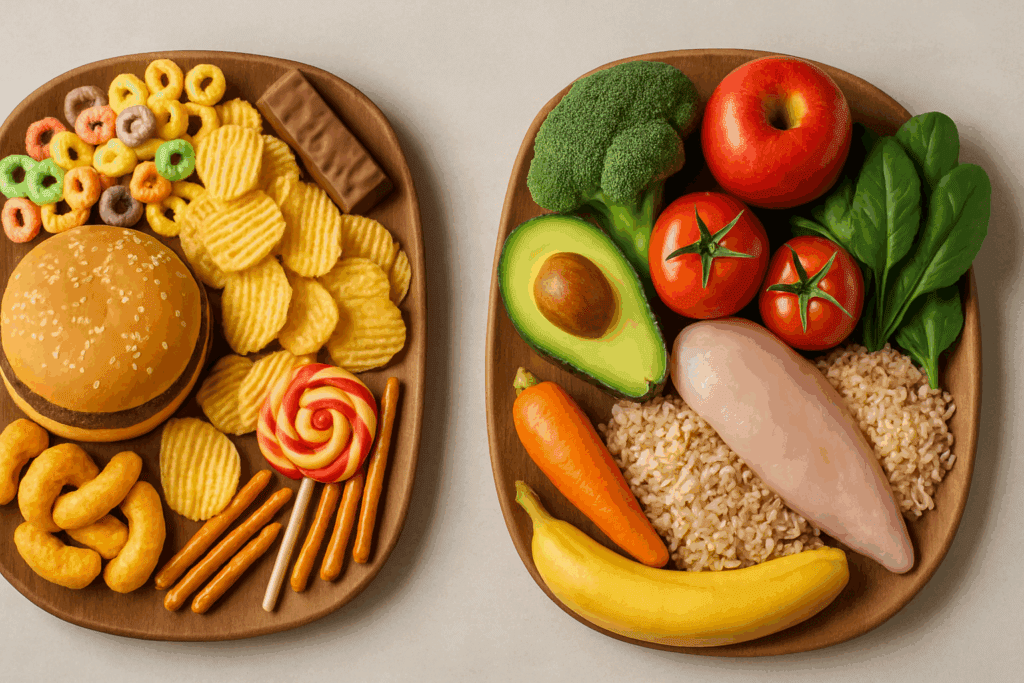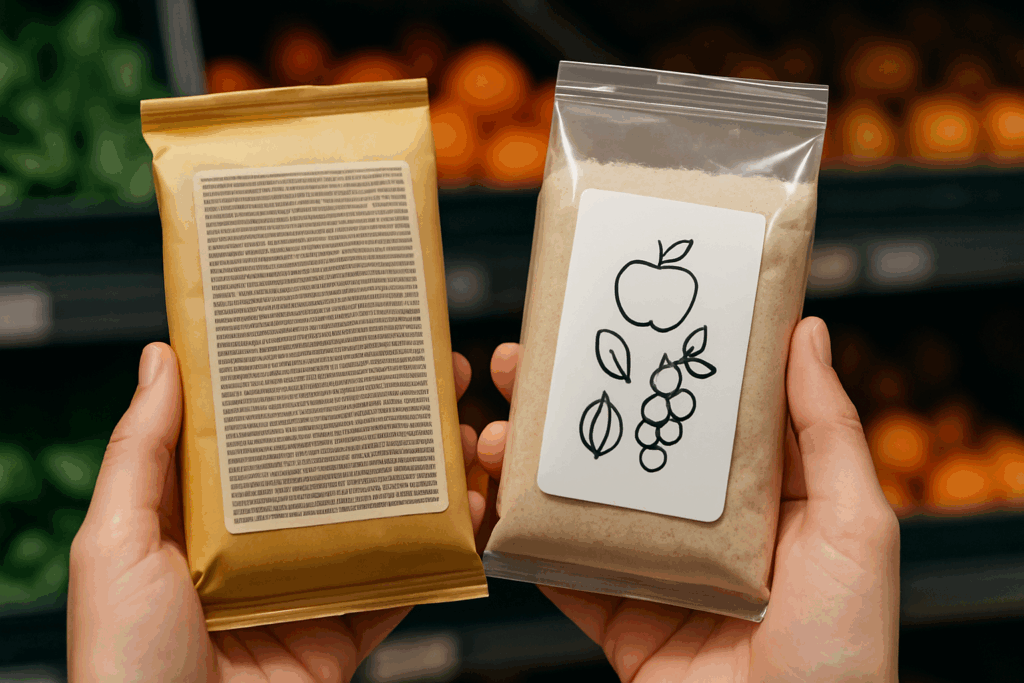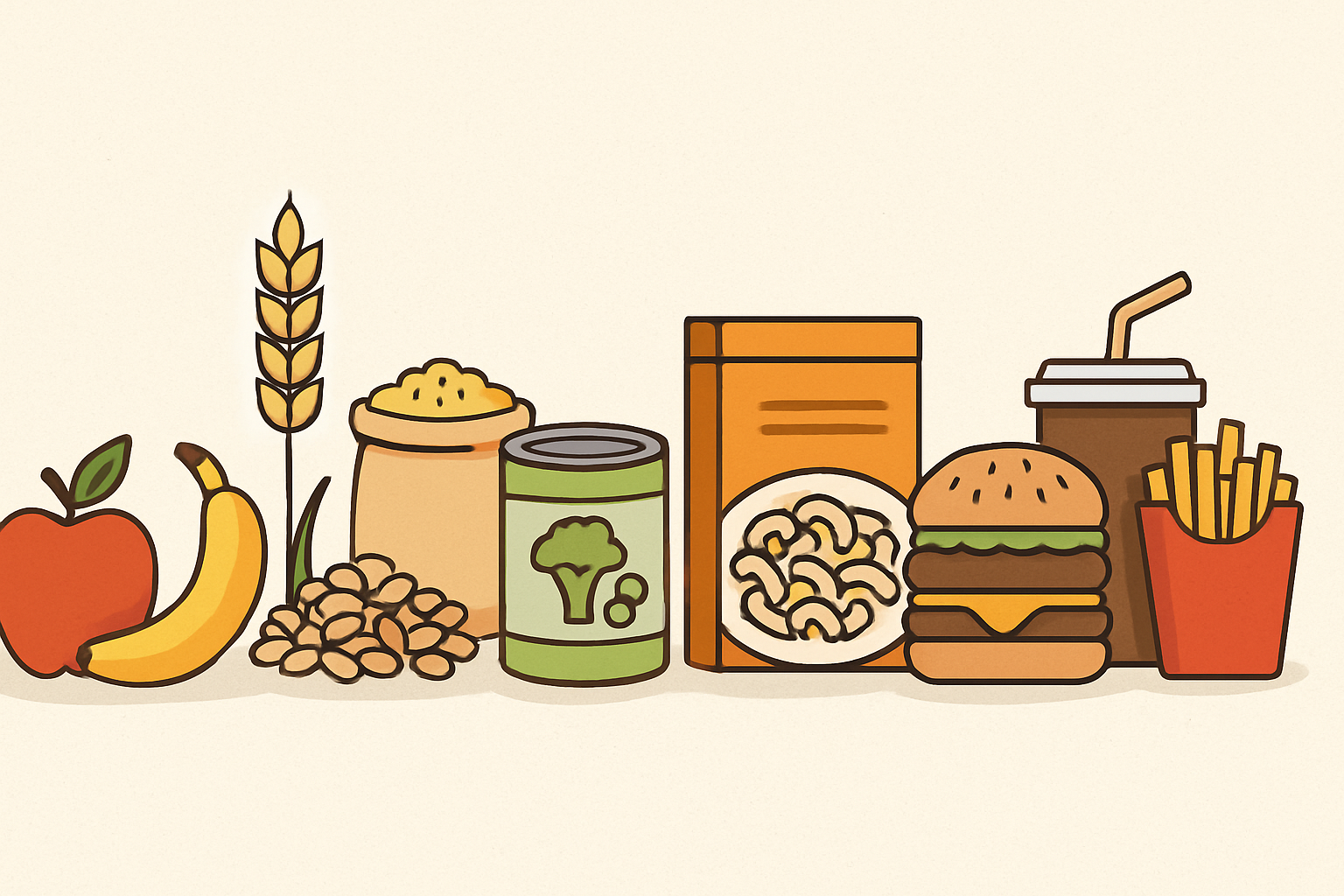In a world saturated with fad diets and conflicting nutrition advice, the concept of clean eating has emerged as a guiding light for those seeking sustainable, evidence-based dietary choices. Clean eating simplified is not about deprivation or extreme rules. Instead, it is about embracing whole, minimally processed foods in a way that nurtures both body and mind. This doctor-backed guide explores what constitutes the cleanest diet, how to start clean food habits, and why a clean living meal plan rooted in science can lead to lasting health improvements.
You may also like: 4 Ways to Have a Healthy Diet: Expert Tips Backed by Science for Better Nutrition and Long-Term Wellness
Understanding Clean Eating and Its Foundational Principles
At its core, clean eating refers to choosing whole foods over processed alternatives. It emphasizes fresh vegetables, fruits, lean proteins, whole grains, and healthy fats while minimizing added sugars, refined grains, and artificial additives. Unlike rigid diets that promise rapid results, a clean eating diet plan is built on flexibility and mindfulness. It encourages individuals to become more attuned to their food choices and their body’s needs.
The clean eating diet has evolved to include modern insights into nutritional science. Studies have shown that diets high in whole foods and low in ultra-processed ingredients can reduce the risk of chronic diseases like obesity, heart disease, and type 2 diabetes. For beginners, learning how to eat clean for beginners may initially feel overwhelming. However, with the right education and guidance, the transition becomes manageable and even enjoyable.

Whole Food Eating for Beginners: Making the Shift
Whole food eating for beginners starts with one simple principle: eat foods as close to their natural state as possible. This means choosing an apple over applesauce or a bowl of oats instead of instant oatmeal with added sugar. The benefits of this approach go beyond nutrition labels; whole foods provide more fiber, essential vitamins, and antioxidants than their processed counterparts.
Transitioning to a clean food plan can begin gradually. Start by reading the nutrition label on food products. Understanding ingredients, serving sizes, and nutrient values helps identify what qualifies as clean foods. When you read the nutrition label on food, look for products with few ingredients, most of which should be recognizable and pronounceable. The fewer the additives and preservatives, the closer the food aligns with the principles of a clean diet.

The Role of Nutrition Labels and Label Makers in Clean Eating
In the pursuit of simple clean eating, nutrition labels play a critical role. These labels provide a window into what you are actually consuming. When shoppers read the nutrition label on food, they can make informed decisions aligned with their clean eating goals. For those who prepare meals at home, tools like a food nutrition label maker or supplement facts label maker can be invaluable. These resources help in creating accurate labels for homemade meals or dietary supplements.
Creating a label using a free nutrition facts label maker not only promotes transparency but also empowers consumers to take charge of their nutrition. For individuals developing a clean living meal plan or making dietary supplements, platforms that allow you to create a nutrition label free are helpful. These tools ensure that what you prepare at home meets the standards of clean eating simplified.

Building a Clean Eating Diet Plan: From Pantry to Plate
Creating a clean eating diet plan begins in the pantry. Stocking up on staple clean foods like legumes, quinoa, brown rice, leafy greens, sweet potatoes, and healthy oils sets the foundation for success. By building meals around whole ingredients, it becomes easier to avoid heavily processed options that dominate many modern diets.
A clean food plan doesn’t require culinary expertise. Simple meals like grilled salmon with roasted vegetables or a quinoa salad with chickpeas and olive oil are easy to prepare and packed with nutrients. For busy individuals, meal prepping can ensure adherence to a clean living meal plan even on hectic days. Planning ahead reduces the likelihood of turning to convenience foods that do not align with a clean diet.
Clean Foods vs. Processed Foods: Understanding the Difference
One of the most important aspects of clean eating simplified is the ability to distinguish between clean foods and processed ones. Clean foods are typically whole or minimally altered. Think fresh produce, whole grains, and lean meats. Processed foods, on the other hand, often contain added sugars, refined grains, and artificial flavorings.
To support whole food eating for beginners, it’s essential to understand where foods fall on the processing spectrum. Not all processing is bad—frozen vegetables or canned beans with no added salt can still be part of a clean food plan. The key is to identify and avoid highly processed foods that offer little nutritional value. Being able to read the nutrition label on food helps consumers navigate these choices with confidence.

Developing a Clean Living Meal Plan That Works for You
A clean living meal plan should not be one-size-fits-all. It needs to accommodate individual dietary needs, preferences, and lifestyles. Whether you’re gluten-free, plant-based, or an omnivore, the principles of a clean diet can be applied across dietary preferences. What matters is the consistency and quality of food choices, not perfection.
Start small by replacing one processed meal a day with a clean, whole-food alternative. Gradually expand your clean eating diet to encompass more meals and snacks. Utilize tools such as a blank nutrition facts label or a food nutrition facts label creator to track what you’re eating. These tools can reinforce awareness and accountability while supporting your transition.
Clean Eating Simplified for Everyday Life
Simple clean eating doesn’t mean boring or restrictive. On the contrary, it can lead to culinary exploration and a renewed appreciation for natural flavors. Herbs, spices, citrus, and vinegars can add zest to meals without relying on sugar or excessive salt. As taste buds adjust, the richness of real food becomes more satisfying.
Social settings, dining out, and celebrations can be navigated with a clean food plan in mind. Choose menu items that focus on fresh ingredients and ask questions about preparation methods. When cooking at home, experiment with clean recipes and consider using a food nutrition facts label creator to track ingredients and portions. These small efforts build habits that align with a clean eating diet.
Practical Tips on How to Eat Clean for Beginners
For those starting their journey, knowing how to eat clean for beginners involves practical strategies. Begin with grocery shopping—stick to the perimeter of the store where whole foods like produce, dairy, and meat are typically located. Avoid aisles filled with processed snacks and sugary cereals.
Reading labels is another essential skill. When you read the nutrition label on food, focus on sugar content, sodium levels, and the type of fat included. Skip products with a long list of unrecognizable ingredients. If you’re cooking at home, you can make nutrition labels free using online platforms to assess your meals.
Meal prepping and batch cooking can support a clean eating diet plan by ensuring healthy meals are readily available. Choose simple recipes and prepare ingredients in advance. This minimizes decision fatigue and keeps you aligned with your clean food plan, even during busy weeks.
Avoiding Pitfalls: Common Myths About the Cleanest Diet
There are several myths surrounding the cleanest diet that can discourage or mislead beginners. One common misconception is that clean eating is expensive. While organic produce and specialty items can carry a higher price tag, many clean foods such as beans, rice, oats, and seasonal vegetables are budget-friendly. Planning and bulk-buying can reduce costs significantly.
Another myth is that clean eating requires cutting out all indulgences. A clean living meal plan can and should include flexibility. Enjoying an occasional treat does not derail your progress; it is about balance and long-term sustainability. Clean eating simplified does not mean rigid discipline—it means making more informed and health-conscious decisions most of the time.
It is also important to challenge the notion that clean eating is only for the health-obsessed. Everyone can benefit from a cleaner diet. Emphasizing real food over artificial ingredients supports gut health, energy levels, and cognitive function. It is a lifestyle approach that aligns with modern scientific understanding of nutrition.
Using Label Makers and Digital Tools to Support Clean Eating
Digital tools such as a supplement facts label maker or a free nutrition facts label maker can provide crucial support for those following a clean eating diet. These tools are especially useful for home chefs and wellness professionals who want to maintain transparency in the foods they prepare.
Creating a label with a food nutrition facts label creator ensures that meals meet specific dietary goals, whether that means reducing sugar, increasing fiber, or managing portion sizes. Even for personal use, being able to create nutrition labels free helps reinforce good habits and aids in meal tracking. This reinforces the principles of clean eating simplified by making nutrition visible and actionable.
Technology can also help streamline planning. Apps that generate grocery lists, suggest recipes, and log meals can further support a clean food plan. These tools create consistency and allow users to stay aligned with their clean living meal plan with minimal effort.
Why Clean Eating Supports Long-Term Health and Longevity
The cleanest diet is not a short-term fix but a long-term investment in health. Research supports that diets rich in whole foods contribute to lower inflammation, improved metabolic health, and reduced risk of chronic illnesses. Clean eating also supports mental clarity, emotional stability, and sustained energy.
Whole food eating for beginners has far-reaching benefits when it becomes part of a regular lifestyle. Over time, clean foods become the default, making it easier to maintain healthy habits without feeling deprived. When clean eating is simplified and integrated into daily life, it ceases to feel like a “diet” and instead becomes a natural way of living.
This dietary approach is inclusive and adaptable. Whether you’re managing a health condition, supporting fitness goals, or simply wanting to feel better day to day, a clean food plan can be tailored to meet your needs. The focus on nutrition, quality, and balance makes it one of the most sustainable dietary models available.

Frequently Asked Questions: Clean Eating Simplified for Lifelong Wellness
What are the psychological benefits of adopting a clean eating diet plan?
While the physical benefits of clean foods are well-documented, the psychological effects often go unnoticed. Following a clean eating diet plan can significantly improve mental clarity, emotional stability, and stress management. Consuming whole foods reduces blood sugar spikes, which in turn stabilizes mood and enhances focus throughout the day. Moreover, the act of preparing meals as part of a clean food plan fosters a sense of control and self-discipline that positively influences self-esteem. For individuals exploring how to eat clean for beginners, the mental uplift from consistent, nourishing food choices often becomes a key motivator in sustaining this lifestyle.
How can athletes tailor a clean eating diet to support performance and recovery?
Athletes have specific nutritional needs, and a clean eating diet can be strategically aligned to support both performance and post-exercise recovery. Emphasizing clean foods like lean proteins, complex carbohydrates, and antioxidant-rich fruits ensures energy sustainability and reduced inflammation. A clean living meal plan for athletes might include nutrient timing—such as consuming a banana and almond butter before a workout and a quinoa bowl afterward—to maximize nutrient absorption. Simple clean eating in this context isn’t about eating less, but about eating smarter. For athletes, building a customized clean eating diet plan helps optimize gains, reduce fatigue, and speed up tissue repair.
Can a clean food plan support hormone balance, particularly in women?
Absolutely. Hormones are highly sensitive to dietary inputs, and many of the additives found in processed foods can disrupt endocrine function. Clean foods, rich in omega-3s, fiber, and phytonutrients, support hormonal harmony by providing key building blocks like cholesterol (from healthy fats) needed for hormone production. A clean food plan that includes flaxseeds, leafy greens, sweet potatoes, and legumes can aid in estrogen metabolism and reduce symptoms associated with hormonal imbalance. For women seeking the cleanest diet for better reproductive or thyroid health, whole food eating for beginners can be a transformative entry point to improved well-being.
What role does clean eating simplified play in managing chronic inflammation?
Chronic inflammation is a root cause of many diseases, and simple clean eating offers an anti-inflammatory dietary approach. Eliminating processed sugars, hydrogenated oils, and artificial preservatives helps reduce internal inflammation. A clean eating diet rich in turmeric, ginger, berries, and cruciferous vegetables works to suppress inflammatory pathways at the cellular level. Unlike short-term detoxes, a consistent clean living meal plan creates a sustainable anti-inflammatory environment within the body. Whole food eating for beginners often yields surprising improvements in joint comfort, skin health, and immune resilience—all markers of reduced inflammation.
Are there cultural or global adaptations of a clean eating diet that work just as well?
Clean eating isn’t restricted to Western food norms; in fact, many global cuisines inherently embrace the principles of clean foods. The Mediterranean diet, for instance, centers around fresh produce, legumes, fish, and olive oil—making it a natural fit for a clean eating diet plan. Traditional Japanese meals often feature fermented vegetables, seaweed, and rice, aligning well with clean diet goals. Even Ethiopian cuisine, with its injera and lentil stews, offers a fiber-rich, whole-food framework. Exploring cultural variations not only enriches the palate but supports clean eating simplified by introducing variety and enjoyment to the table.
How do social dynamics impact long-term success with a clean food plan?
The social context in which we eat has a profound influence on our dietary choices. Adopting a clean food plan often requires navigating group norms, family traditions, or peer pressure around food. Supportive social environments can bolster consistency, especially when shared meals reflect clean living meal plan principles. Planning potlucks with a simple clean eating theme or sharing clean recipes in group chats can foster community and accountability. Those new to whole food eating for beginners may find it easier to stay on track when they involve friends or family in the process. Social alignment reinforces motivation and long-term adherence.
What are emerging trends in technology that support clean eating goals?
Technology continues to revolutionize the clean eating movement by offering tools that promote accountability, customization, and education. Apps that track ingredients, suggest meal swaps, and scan labels empower consumers to follow a clean eating diet more intuitively. Wearable tech is beginning to integrate biometric feedback to assess how different foods affect sleep, mood, and energy levels—allowing for more personalized clean food plans. Online grocery platforms now feature filters to sort clean foods by ingredient quality, making it easier to shop intentionally. These innovations reinforce the practicality of clean eating simplified in an increasingly digital world.
How does clean eating contribute to environmental sustainability?
A clean eating diet often aligns with eco-conscious habits. Choosing clean foods typically involves prioritizing locally grown, seasonal produce, which reduces carbon emissions associated with transport. Minimizing packaging and food waste also supports environmental goals—two areas naturally addressed when cooking at home using a clean living meal plan. The cleanest diet doesn’t just nourish the body but also considers planetary well-being by discouraging overconsumption of industrially produced food. Whole food eating for beginners can thus serve as both a health and environmental strategy, promoting responsible sourcing and consumption practices.
Can clean eating help regulate appetite and prevent overeating?
Yes, clean eating simplified can play a critical role in appetite regulation. Whole foods are rich in fiber, water, and essential nutrients that promote satiety, helping individuals feel full longer and curb unnecessary snacking. A clean food plan built on consistent blood sugar control—thanks to unrefined carbs and quality proteins—reduces the likelihood of energy crashes and cravings. When people learn how to eat clean for beginners, they often report fewer emotional eating episodes, as nutrient-dense meals support neurotransmitters linked to appetite control. This regulatory effect is a key benefit of maintaining a structured clean eating diet plan.
What’s the most overlooked aspect of maintaining the cleanest diet over time?
One of the most underestimated challenges is culinary fatigue—boredom from repetitive meals. Over time, even the healthiest clean living meal plan can become monotonous if not refreshed. Rotating seasonal ingredients, experimenting with global spices, and occasionally revisiting your clean food plan can restore excitement and prevent burnout. The longevity of a clean eating diet lies in flexibility, not rigidity. Encouraging creativity in the kitchen ensures that whole food eating for beginners remains engaging, sustainable, and emotionally satisfying for years to come.

Conclusion: Embracing Clean Eating as a Path to Lifelong Wellness
Clean eating simplified offers a powerful, science-backed pathway to better health. By focusing on whole foods, transparency in labeling, and mindful meal planning, individuals can develop a clean living meal plan that aligns with their goals and lifestyle. The cleanest diet is one that is sustainable, adaptable, and rooted in real nourishment—not trends or deprivation.
For beginners, the journey begins with small changes: choosing fresh ingredients, reading labels, and experimenting in the kitchen. With the help of modern tools like a free nutrition facts label maker or supplement facts label maker, individuals can take charge of their dietary habits. Whether you’re using a food nutrition facts label creator or simply learning how to eat clean for beginners, the goal is the same: empowering yourself with knowledge and intention.
Ultimately, clean eating is not about perfection but progress. It is a commitment to choosing better foods, understanding what fuels your body, and embracing a lifestyle that prioritizes well-being. With each clean meal, each mindful choice, and each label read with care, you’re investing in a future of vitality, resilience, and health.
Further Reading:
11 Simple Ways to Focus on Whole Foods Instead of Clean Eating


